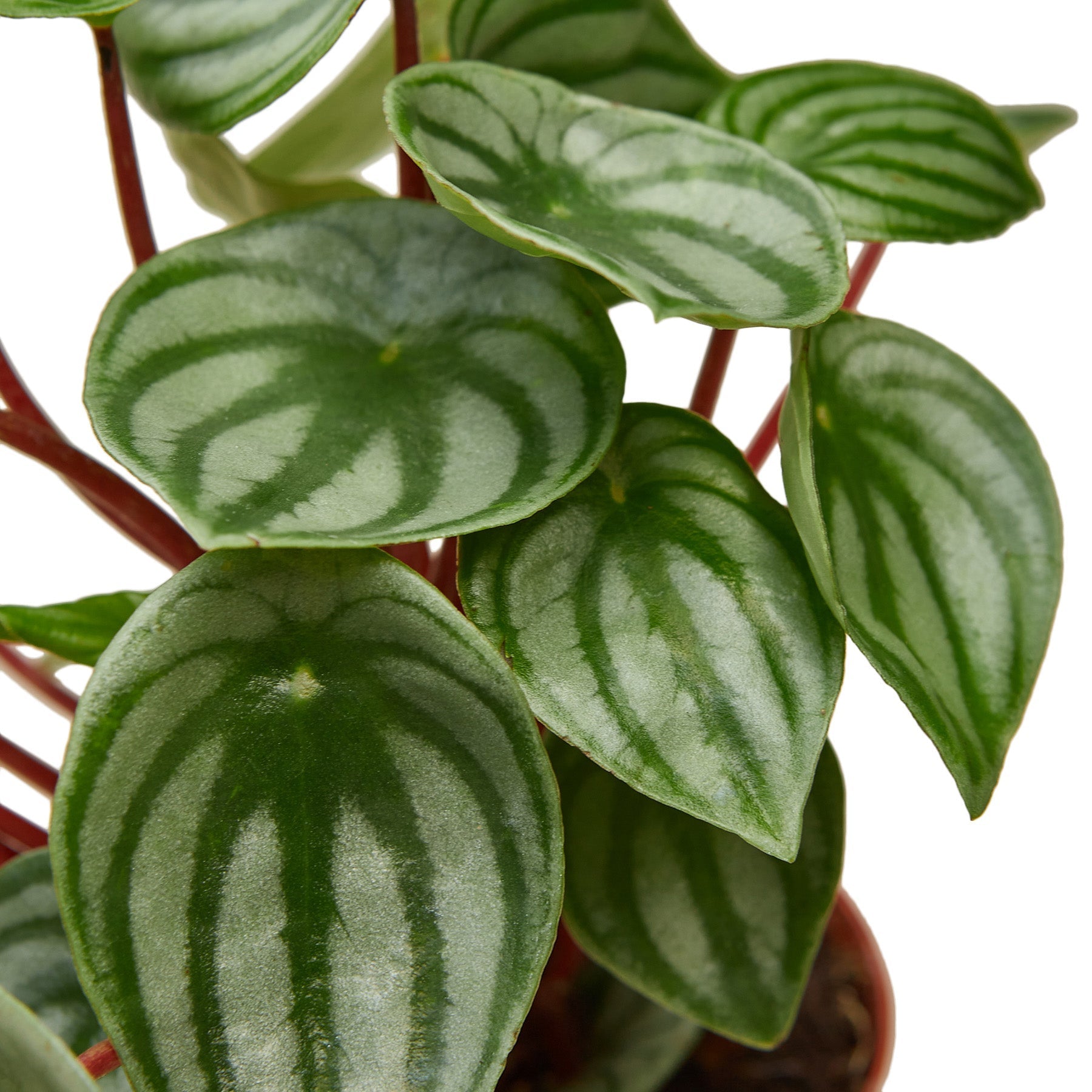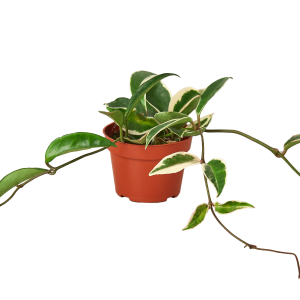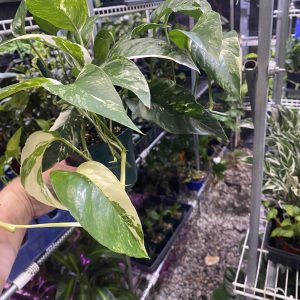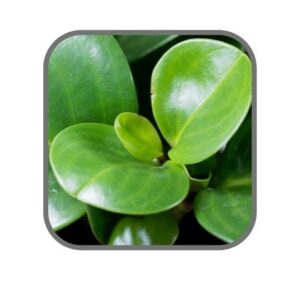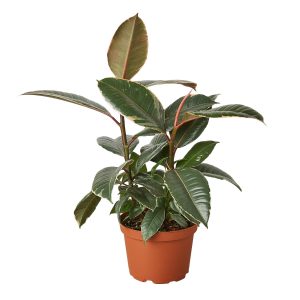The Watermelon Peperomia (Peperomia argyreia) is just adorable.? Each leaf looks like a tiny watermelon painted by an artistic fairy.? It?s shimmery, it?s sparkly and it is a perfect addition to your indoor plant collection.
The watermelon peperomia is easy to grow and is very adaptable, making it great for beginners. It stays compact but given room to grow it can fill up a shelf nicely growing to about a foot in height.
Native to northern South America including Bolivia Brazil Ecuador and Venezuela. The plant is not closely related to either watermelons or begonias. These terms relate to the shape markings and texture of the leaves. Growing to 20 cm tall. It is a perennial with asymmetrical oval green leaves slightly fleshy strikingly marked with curved silver stripes and red stems. Tiny green flower spikes appear in summer. *Limit 2 Per Customer*
Botanical Name: Peperomia argyreia
Common Names : Watermelon Peperomia Watermelon Begonia
